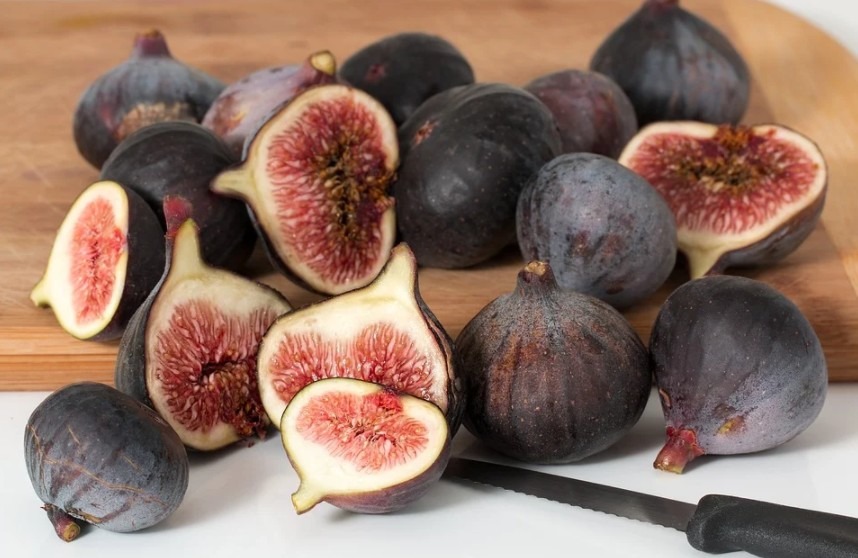Figs are known as “fruit of the gods.” They are the sweetest of all fruits, having a natural sugar content of 55%. In America, California produces about 98% figs. However, most figs are produced in Turkey. This article includes many interesting and fun facts that you need to know about figs.
A Brief Introduction of Figs
Figs are a fruit that grows on the Ficus tree, scientifically called Ficuscarica. It is part of the Mulberry family. Figs are considered to be from an Asian species of plant. A popular fruit that comes from these plants is called common fig.
Fig is a very distinctive purple-colored, teardrop-shaped fruit. It is about the size of an adult’s thumb and contains hundreds of tiny seeds. The inside of the fruit is deep pink, and it has a sweet and mild taste. It is par excellence in many culinary delicacies.
Wild fig trees go back about a hundred million years, and they are cultivated since ancient times. They are found mostly in dry and sunny areas that are close to the sea, having a rich soil. Figs are said to be the first farmed food; they were farmed even before wheat and barley.
Figs are mainly farmed in West Asia, South Asia, Europe, and Africa, and they yield two crops in a year; once in summer and the other in autumn. But, there is no particular season of harvesting figs. Figs have a very distinct quality; they are self-fruitful, which means you need only one plant to produce fruit.
A fig tree is the symbol of abundance, fertility, and sweetness.On average, it grows 4 to 9meters. Moreover, figs have very fragrant leaves, which are two or three-lobed. They do not flower because the fruit is the flower, hence follows the process of enclosed florescence. Tiny flowers inside the fruit produce seeds. Many fig varieties do not require pollination.
Figs are packed with nutrients and low in calories. They contain a high amount of soluble dietary fiber, minerals, and vitamins. Figs are particularly rich in vitamin B6 and copper. They have potential and proven health benefits and are a great addition to your diet. Olympic athletes also use figs as training foods.
Some common health benefits of consuming figs include.
- Helps with metabolism and energy production.
- Helps in the production of blood cells, connective tissues, and neurotransmitters.
- Helps in the formation of new proteins.
- Promotes brain health.
- Prevents the risk of heart diseases.
- Helps manage blood sugar levels.
- Helps improve digestive problems and maintains healthy digestion.
- May have anticancer effects, because of the presence of phytonutrients and antioxidants.
- May help clear breakouts and treat skin conditions.
- Might assist in weight loss.
Figs are very high in calcium as well; 100 grams of figs contain 162 grams of calcium. Eating half a cup of figs has as much calcium as a half cup of milk. Figs are said to have more potassium than bananas.
Sometimes, consuming a lot of figs might cause diarrhea. Figs are very rich in vitamin K, which causes them to inhibit the function of certain drugs such as blood thinners. People that are allergic to certain pollens or latex might be hypersensitive to figs.
Some of the most common varieties of figs are Black Mission, Kadota, Calimyrna, Golden, and Adriatic.
Fresh figs are a great low-calorie snack, and they have natural sugars. On the other hand, dried figs are concentrated in sugar content. Dried figs are available all year round, but the texture and taste of fresh figs are incomparable, they are smooth, chewy, and crunchy.
Fresh figs should not be stored for a long time, keep them in the fridge to maintain freshness. When buying figs, they should feel plump and tender, but not mushy. The best way to buy figs is to smell them; they should have a mild and sweet fragrance. Fully ripened figs are very high in antioxidants.
Dried or fresh figs can be eaten as they are, or you can also add them to different meals. Figs go well with cheese, oatmeal, wine, yogurt, salad, or desserts. Fig jam is also a great way to increase the shelf life of figs. Fig puree can be used in baked goods instead of fat. They also hold moisture and keep things fresh.
Figleaves are hard to find but are very nutritious. They can be used to wrap rice and meat. If you can’t get a hold of fresh leaves, a dried fig leaf tea is a great way to get the benefits.
An exciting fact is that fig leaves are used in many roman paintings and sculptures to cover the genitals of nude figures.
Final Words
Figs have a very historical past; they are probably the first farmed fruit in history. Figs are decadent and have a lot of health benefits. Besides the fruit, fig leaves are also a great way to consume essential nutrients. Overall, figs are an excellent addition to a healthy diet. Many figs-infused skincare products have proved to promote skin health.

